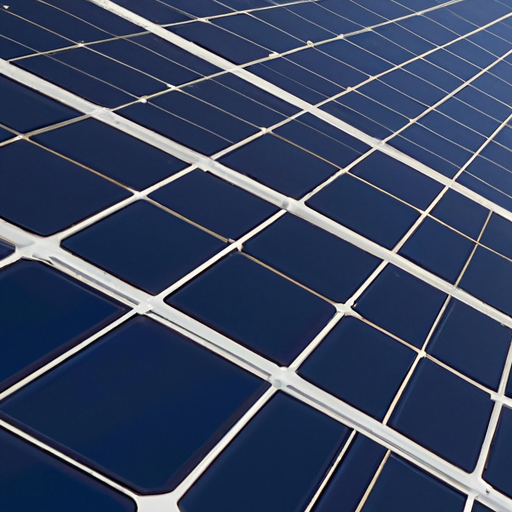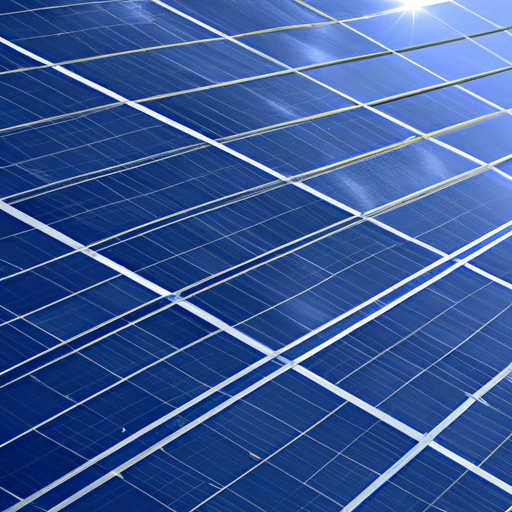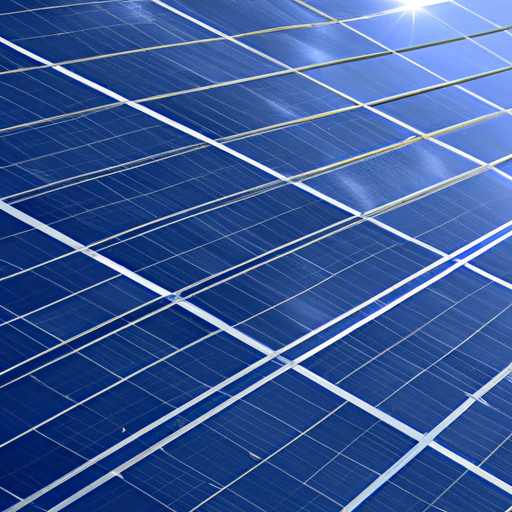Do you ever wonder how solar panels work? How is it possible for them to generate electricity from the sun’s rays? It’s actually quite fascinating, and in this article, I’ll give you a detailed explanation of how solar panels work.
Solar panels work by harnessing the power of the sun’s energy through photovoltaic cells. These cells are made up of layers of silicon and other materials that have special properties which allow them to convert sunlight into electricity. When sunlight hits the photovoltaic cells, it excites the electrons in the silicon, causing them to move and generate an electric current. This current is then captured and can be used to power various devices or stored in batteries for later use.
Now, you may be wondering why some people choose to live off-grid and rely solely on solar power. Well, the answer lies in the many advantages it offers. Living off-grid means you’re not dependent on traditional sources of electricity and can enjoy the freedom of generating your own power. Plus, it’s a sustainable and environmentally friendly solution as solar power is clean and renewable. In this article, I’ll delve into the benefits and challenges of living off-grid using solar panels.
One important factor to consider when it comes to solar panels is the temperature they can reach. After all, they are exposed to direct sunlight for extended periods of time. Solar panels can get quite hot, especially during peak sunlight hours. However, the good news is that most solar panels are designed to withstand high temperatures. They are made of heat-resistant materials and have ventilation systems in place to prevent overheating. In this article, we’ll explore just how hot solar panels can get and what measures are taken to ensure they operate at their optimum efficiency.
So, if you’re curious about how solar panels work, the advantages and challenges of living off-grid, or the temperature they can reach, you’re in the right place! Keep reading to learn more about these fascinating aspects of solar power.

Introduction to Solar Panels
Solar panels have become increasingly popular as a source of energy in recent years, providing an environmentally friendly and sustainable alternative to traditional power sources. In this article, you will learn how solar panels work and their various components, installation process, efficiency and performance, benefits, as well as their applications, challenges, advancements, and future prospects.
What are solar panels?
Solar panels, also known as photovoltaic (PV) panels, are devices that convert sunlight directly into electricity. They are made up of multiple interconnected solar cells, typically made of silicon, which absorb photons from sunlight and release electrons, generating an electric current.
How do solar panels generate electricity?
Solar panels generate electricity through a process called the photovoltaic effect. When sunlight hits the solar cells, the photons in the light excite the electrons in the silicon atoms of the solar cells. This creates an electric field and causes the electrons to flow, generating a direct current (DC) of electricity. The DC electricity is then converted into alternating current (AC) using an inverter, allowing it to be used to power electrical devices in homes, businesses, and other applications.
Components of a Solar Panel System
A solar panel system consists of several essential components that work together to harness solar energy and generate electricity.
Solar panels
Solar panels, as mentioned earlier, are the main component of a solar panel system. They typically consist of multiple solar cells connected together and covered by a protective glass sheet. The solar cells absorb sunlight and convert it into electricity.
Inverter
The inverter is an important component of a solar panel system as it converts the DC electricity generated by the solar panels into AC electricity. AC electricity is the standard form of electricity used in homes and businesses. The inverter also ensures that the electricity produced by the solar panels matches the electrical grid’s voltage and frequency.
Battery storage
Some solar panel systems include batteries to store excess electricity generated during the day for use at night or during periods of low sunlight. Battery storage allows for a more efficient use of solar energy and ensures a continuous power supply, even without sunlight.

Working Principle of Solar Panels
Photovoltaic effect
The photovoltaic effect is the physical process by which solar panels generate electricity. When photons from sunlight hit the solar cells, they transfer their energy to the electrons in the silicon atoms, causing them to become excited. The excited electrons are then forced to move in a particular direction due to the electric field created within the solar cells. This flow of electrons creates a current, resulting in the generation of electricity.
Conversion of sunlight into electricity
Solar panels are designed to convert sunlight into electricity efficiently. The solar cells within the panels are made of semiconductor materials, typically silicon, which have properties that allow them to absorb photons from sunlight. When the sunlight strikes the solar cells, it creates an electric field that separates the positive and negative charges within the cells. This separation of charges generates an electric current, which can be used to power electrical devices or stored in batteries for later use.
Solar Panel Installation Process
Installing solar panels involves several steps to ensure optimal efficiency and performance.
Site assessment
Before installing solar panels, a site assessment is conducted to determine the suitability and feasibility of the location. Factors such as shading, roof orientation, and available space are considered to identify the most suitable areas for solar panel installation.
Mounting and positioning
Once the site assessment is complete, the solar panels are mounted and positioned on rooftops or open spaces. The panels are typically positioned at an angle to maximize sunlight exposure and optimize energy generation.
Wiring and connection
After the solar panels are mounted, the wiring and connection process begins. The electrical wiring is connected from the solar panels to the inverter, which converts the DC electricity into AC electricity. The inverter is then connected to the main electrical panel, allowing the solar-generated electricity to power electrical devices in the building or be fed back into the electrical grid.
Efficiency and Performance of Solar Panels
Factors affecting solar panel efficiency
Several factors can influence the efficiency of solar panels, including:
Sunlight intensity and duration: Solar panels generate more electricity when exposed to brighter and longer periods of sunlight.
Temperature: Solar panel efficiency decreases as temperatures increase. High temperatures can cause the electrons in the solar cells to move more slowly, reducing their ability to generate electricity.
Shading and obstructions: Shading from trees, buildings, or other objects can reduce the amount of sunlight reaching the solar panels, decreasing their efficiency.
Dust and dirt: Accumulation of dust and dirt on the surface of the solar panels can reduce their efficiency by blocking sunlight absorption.
Monitoring and maintenance
To ensure optimal performance, solar panels should be regularly monitored and maintained. This includes cleaning the panels to remove dirt and debris, checking for any signs of damage or shading, and inspecting electrical connections. Monitoring systems can also be installed to track the energy production of the solar panels and detect any potential issues.
Benefits of Solar Panels
Renewable and sustainable energy source
Solar panels provide a renewable and sustainable energy source since sunlight is an abundant and virtually inexhaustible resource. Unlike fossil fuels that contribute to pollution and greenhouse gas emissions, solar panels harness clean energy from the sun without causing harm to the environment.
Financial savings
One of the significant benefits of solar panels is the potential for long-term financial savings. By generating your own electricity, you can reduce or eliminate dependence on the grid and save on monthly utility bills. Additionally, some regions offer incentives, such as tax credits or net metering programs, which allow you to sell excess electricity back to the grid, providing additional financial benefits.
Environmental impact
Solar panels have a positive environmental impact by reducing reliance on fossil fuels for electricity generation. The use of solar energy helps to mitigate climate change by reducing greenhouse gas emissions, air pollution, and dependence on non-renewable resources. Investing in solar panels contributes to a cleaner, greener, and more sustainable future.
Applications of Solar Panels
Residential
Solar panels are commonly used in residential settings to provide electricity for households. They can power appliances, lighting systems, heating and cooling systems, and more. Installing solar panels on rooftops allows homeowners to generate their own electricity and reduce their dependence on the electrical grid.
Commercial
Solar panels are also widely used in commercial buildings to generate electricity. Businesses can benefit from reduced energy costs, enhance their sustainability efforts, and portray a positive image to customers by utilizing clean energy sources.
Off-grid living
Solar panels are ideal for off-grid living, where access to traditional electricity sources is limited or non-existent. With the combination of solar panels and battery storage, individuals and communities can become self-sufficient and rely solely on solar energy for their electricity needs.
Challenges and Limitations of Solar Panels
Intermittent power generation
One of the main challenges of solar panels is their dependence on sunlight. Solar energy generation is intermittent, as it relies on daylight hours and weather conditions. This means that solar panels may not generate electricity during the night or on cloudy days. However, battery storage systems can help mitigate this limitation by storing excess electricity for use during periods of low sunlight.
Dependence on sunlight
The efficiency of solar panels is directly influenced by sunlight intensity and duration. Locations with less sunlight or frequent cloud cover may not generate as much electricity compared to areas with abundant sunlight. However, advancements in solar panel technology are continuously improving the efficiency and performance of solar panels, making them viable in a wider range of geographical locations.
Initial cost
The initial cost of purchasing and installing solar panels can be a barrier for some individuals or businesses. However, the long-term savings on electricity bills, potential government incentives and tax credits, as well as the positive environmental impact, often outweigh the initial investment. Additionally, competition and advancements in the solar panel industry are gradually reducing the cost of solar panels, making them more accessible to a larger population.
Advancements and Future of Solar Panels
Solar panel technology advancements
The field of solar panel technology is constantly evolving, with ongoing research and development efforts focused on improving efficiency, durability, and affordability. Advancements include the use of new materials, such as thin-film solar cells, and the integration of new technologies, such as perovskite solar cells, which have shown promising results in laboratory settings.
Integration with smart grids
Solar panel systems can be integrated with smart grids, allowing for better control and management of electricity generation, consumption, and storage. Smart grid technologies enable more efficient utilization of solar energy, improved grid stability, and the ability to balance supply and demand.
Potential for widespread adoption
As solar panel technology continues to improve and costs decrease, the potential for widespread adoption of solar panels increases. The demand for clean and sustainable energy sources is growing, and solar panels are becoming an attractive option for individuals, businesses, and governments worldwide. With continued advancements and supportive policies, solar panels have the potential to become a dominant source of electricity in the future.
Conclusion
Solar panels play a crucial role in harnessing solar energy and providing a sustainable alternative to traditional power sources. By converting sunlight into electricity through the photovoltaic effect, solar panels offer numerous benefits, including financial savings, reduced environmental impact, and increased energy independence. Despite the challenges and limitations, advancements in solar panel technology and growing support for renewable energy make solar panels a promising solution for a more sustainable future. Whether for residential, commercial, or off-grid applications, solar panels are paving the way towards a cleaner and greener world. So, why not consider installing solar panels and take part in this clean energy revolution?




